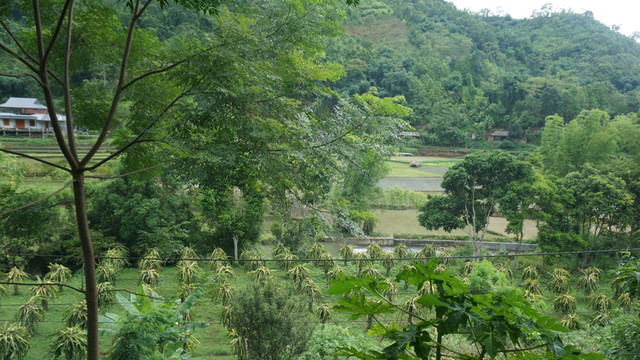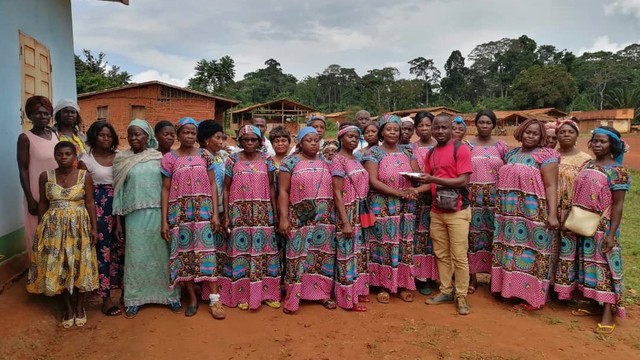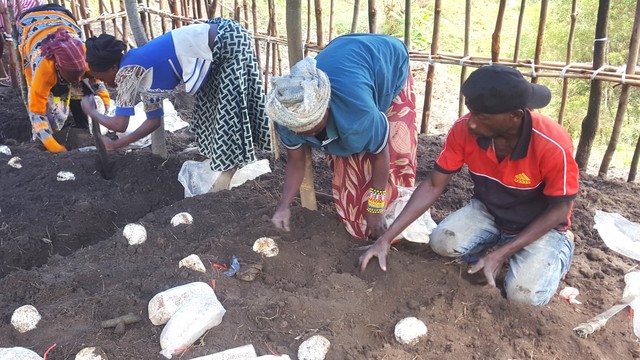Biocultural heritage territories: key to halting biodiversity loss
A new briefing examines the importance of biocultural heritage territories, whose communities are custodians of biodiversity.

The Potato Park in Cuzco, Peru, is an Indigenous territory that has succeeded in conserving and enhancing the local biodiversity, while empowering Indigenous communities (Photo: Sara A. Fajardo/CIP via Flickr, CC BY-NC 2.0)
Human life depends on biodiversity, but biodiversity is being lost at an unprecedented rate, and the human cultures that have conserved it for millennia are also fast disappearing.
In 2021, world leaders will gather to agree new post-2020 targets to address biodiversity loss in the 15th meeting of the Conference of the Parties to the Convention on Biological Diversity (CBD). Until now, the main approach to biodiversity preservation has been through state-run protected areas, often disconnecting nature from human life.
However, recent findings by the Intergovernmental Science-Policy Platform on Biodiversity and Ecosystem Services (IPBES) show that biodiversity is best conserved on the territories of Indigenous Peoples and local communities (IPLCs).
A new briefing by IIED, Asociación ANDES and the Research Centre for Agroecology, Water and Resilience (CAWR) from Coventry University, which draws on 20 years’ experience in the Potato Park in Peru, argues that community-led approaches, such as Indigenous biocultural heritage territories (BCHTs), provide more just and effective alternatives to protected areas in order to meet the CBD post-2020 targets as well as the Sustainable Development Goals (SDGs).
The concept of ‘biocultural heritage’ reflects the Indigenous worldview that biodiversity and culture are indivisible, and are an integral part of holistic wellbeing. This understanding offers an alternative to Western models of conservation that separate people and nature.
Unlike Western concepts such as ‘ecosystem services’ and ‘nature-based solutions’, Indigenous People see their relationship with nature as reciprocal rather than linear
Biocultural heritage territories arise from Indigenous traditions of landscape management. Their main goal is holistic wellbeing, rather than conservation, but holistic wellbeing means the wellbeing of both people and nature, and results in conservation as the outcome of an autonomous process.
Examples of Indigenous BCHTs provided by this briefing are the Potato Park and the Maize Park in Peru. Both Indigenous territories have succeeded in conserving and enhancing the local biodiversity, while empowering Indigenous communities. Their conservation strategies are based on Andean holistic wellbeing concepts and customary laws that promote Indigenous values of ecological stewardship, self-sufficiency, solidarity and equity.
The briefing’s authors, IIED’s Krystyna Swiderska, Asociación ANDES’ Alejandro Argumedo and CAWR’s Michel Pimbert, indicate that the CBD’s post-2020 targets should:
- Acknowledge the link between the loss of both Indigenous territories and biodiversity, and
- Include the protection of Indigenous Peoples’ territories, rights, and traditional knowledge.
The authors add: “Global biodiversity loss is driven by the loss of indigenous cultures and encroachment on indigenous territories. The Convention on Biological Diversity post-2020 biodiversity targets must explicitly recognise the connection between these dual crises.”
In addition, according to the publication, the CBD post-2020 targets should:
- Protect the self-governed territories of Indigenous peoples and local communities (Target 2), and
- Mainstream indigenous traditional knowledge and values into policymaking (Target 13).
IIED is working on a project with partners in China, India, Kenya and Peru to explore how the interlinked traditional knowledge, biodiversity, culture and landscapes – the biocultural heritage – of Indigenous Peoples can contribute to sustainable development.
Contact
Krystyna Swiderska (krystyna.swiderska@iied.org), principal researcher, IIED’s Natural Resources research group



